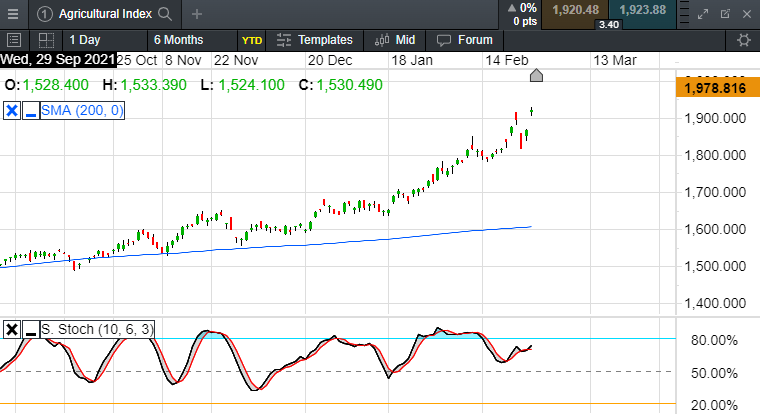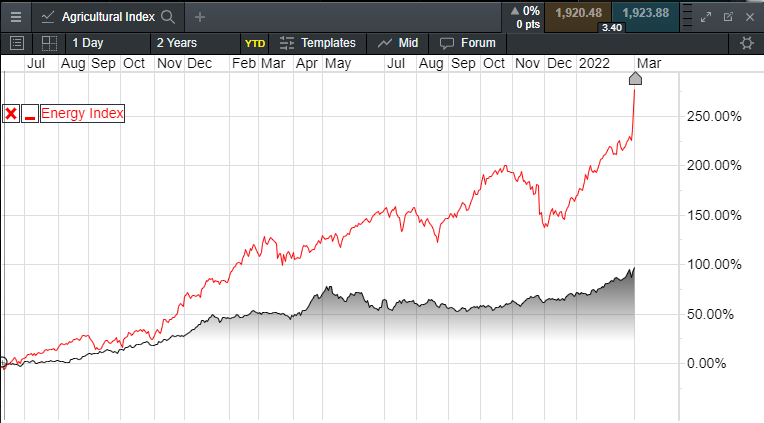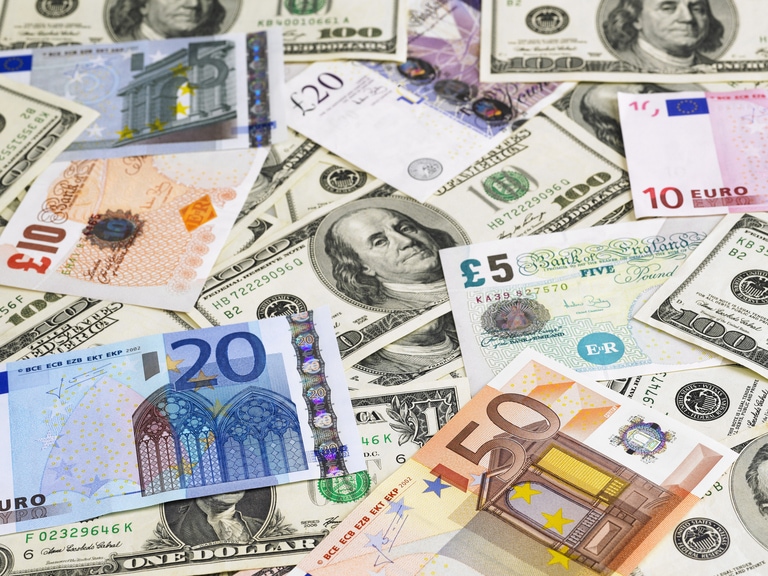At the start of this year there was some hope that coming out of the other side of Covid, that we’d see a semblance of normality return to normal life, and while there was some concern about supply chains and higher energy prices there was a sense that this was probably containable.
Suffice to say that calculus has shifted markedly, while the job of central banks in looking to combat rising inflation risk has become much more complicated.
The Russian invasion of Ukraine which started with a slow burn of lies and obfuscation from Russian President Vladimir Putin about his intentions, has upended the global commodity market sending both energy and agricultural prices to their highest levels in years.
The isolation of Russia from the world financial system is now manifesting itself with major global brands starting to disentangle themselves from the Russian economy.
While sanctions of major Russian banks were the starting point the isolation of Russia’s economy has prompted major banks to look at disentangling themselves from doing business at all inside Russia. This has prompted a run on Russia’s banks over concern that credit cards will no longer work, a fear that appears to have been realised after Mastercard and Visa cut off Russian financial institutions from their networks.
This week BP announced it was divesting its stake in Rosneft which it has a 20% stake in. This is something they should have done some time ago, and last year saw the business account for $2.8bn of profits. BP said that the decision will probably mean it will have to take a total write down of $25bn in Q1, given that it is unlikely to find a buyer and even if it does it will be a forced seller.
Sector peer Shell has also distanced itself from its associations with Gazprom and pulled back from its 27.5% stake in the LNG Sakhalin gas field.
The backlash against Russia has continued today with Apple the latest company to announce that it would stop selling its products in the country.
This looks like it’s going to be an ongoing theme as the sanctions noose tightens even further and is a trend that is only likely to get worse with significant consequences for global supply of key raw materials as well as demand for goods and services, as everything becomes more expensive.
Not only are we seeing it in energy prices, but we are also seeing it in precious and industrial metals prices, of which Russia is a key supplier, and agricultural commodity prices as well.
The rise in agricultural commodity prices is a bigger concern, and there are two reasons for this.
The first one is that Russia and Ukraine combined, account for 20% of the global wheat and corn market, and the second one is that Russia is the biggest exporter of ammonium nitrate, which is used in fertilizer.
In February Russia banned exports of this until April, sending fertilizer prices soaring which in turn has sent crop prices in the same direction.
One of the key takeaways from the most recent CPI numbers was that we are now starting to see inflation manifest itself in everyday items, with double digit rises in as meat, dairy, fish, and fruit.
The CMC Agricultural index has already risen sharply in the last few days, with the prices of Corn, Wheat and Soybean, which make up just over 50% of the index, already up over 15% year to date.
CMC Agricultural Index

Wheat prices have moved back above the previous 2012 peaks and are now back at levels last seen in 2008, while corn prices are back at 2012 levels, when there was a drought in the US as well as wildfires across Russia and Ukraine.
This had a much more significant effect on emerging market economies at the time with the Arab Spring a direct consequence of the last big surge in global grain prices.
These increases in prices are likely to create a similar impact hitting the poorest countries hardest, especially with their being so few alternatives. Soybean prices are also back at levels last seen in 2012.
The economic shock is likely to be exacerbated further by the sharp increase in energy prices, due to companies shying away from buying Russian oil and natural gas due to concerns over sanctions.
With the CMC Energy Index also sharply higher, and up over 40% year to date On the weightings front, US WTI makes up 40.3%, Brent 27.5%, and US natural gas 6.74%
CMC Energy Index

The CMC Energy index while sharply higher, still understates the impact of the big increases seen in energy prices, simply because it contains US natural gas prices, and not European natural gas prices.
US natural gas prices are lower due to the contribution of the shale industry in the US, which Europe doesn’t have, and means prices here are thus much higher.
A lot of European and UK politicians have argued that the lack of fracking in Europe wouldn’t have made that much difference in the wider scheme of things due to pricing, with natural gas being a global market.
That of course is complete and utter nonsense as any basic student of economics will tell you. It is true that the European gas market is global in nature but if you increase the level of supply, prices will then fall to compensate.
You only have to look at the difference between US natural gas prices, which are still below the record levels seen in 2005, when they were 3 times as high as they are now, and European natural gas prices which have hit new record highs this week and could go even higher as Russian oil and gas gets pushed out of the market.
Consumers in Europe and the UK are now paying the price for the ineptitude and naivety of successive government’s decisions across Europe to phase out nuclear and discourage investment in natural gas and other transitional energy sources in the move towards renewables.
CMC Markets Agricultural Index/CMC Energy Index comparison (RoC)

The negligence is no better illustrated than by what we’ve seen the CMC Energy index do since mid-2020, and in a move that understates the inflation impact on European incomes. The index is up over 250%, which when combined with agricultural prices doubling as well means that while inflation may be high now, it is only likely to go higher in the coming months.
PPI levels are already above 25% across all of Europe, while headline CPI inflation in some parts of Europe is above 10%.
Can the ECB afford to sit on the side-lines and do nothing? How many times will the Federal Reserve look to raise rates this year? We could get an idea in the next couple of weeks when the US central bank is expected to hike the Fed Funds rate by 0.25%.
Markets had been pricing in up to 7 rate hikes this year, but this has come down while inflation expectations have gone up.
This will pose enormous challenges for central banks in the coming weeks and months and its unlikely to be pain free, with inflation set to rip higher and everything likely to get much more expensive.
Will central banks be able to ignore the potential consequences of such a move, and will yesterday’s sharp slide in bond yields seen in the UK, US and Europe start to get reversed?






